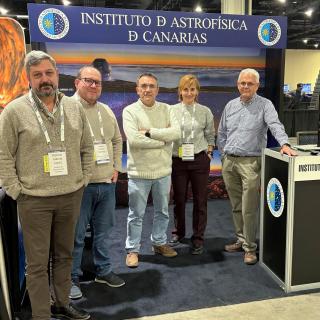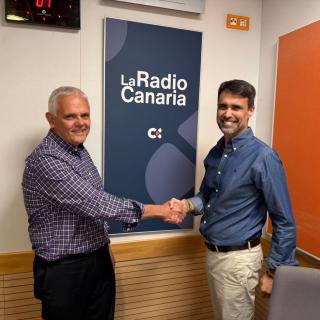The international astrophysics conference “Multi-Object Spectroscopy in the Next Decade. Big Questions, Large Surveys, and Wide Fields, organized by the Isaac Newton Group of Telescopes, will take place from 2nd to 6th March 2015 in the “Circle of Mars” Theatre in Santa Cruz de La Palma. Over 150 experts in the material will gather to discuss the main advances and scientific results from multi-object spectroscopy expected in the next decade.
Multi-object spectroscopy is a modern and powerful observational technique which allows astronomers to obtain simultaneously up to thousands of electromagnetic spectra of astronomical objects, both stars and galaxies.
The enormous volume of data produced make this method a valuable way to carry out large projects of exploration and analysis in a wide variety of astronomical fields. One example is mapping our Galaxy, the Milky Way, another application is to find the distribution and the nature of the dark matter and dark energy in the Universe.
During the conference the main scientific objectives for the next decade will be discussed, optimization strategies will be explored for achieving results and solutions to the technological challenges posed by the development and operation of sophisticated multi-object spectrographs will be shared. La Palma will become for a week the meeting point of the top experts in this field in Europe, America, Asia and Australia.
WEAVE, a powerful spectrograph for the Roque de los Muchachos Observatory
“One of the motives which have led the Isaac Newton Group to organizing this conference in La Palma is the construction, presently under way, of a powerful multi-object spectrograph, WEAVE, for the William Herschel Telescope (WHT) at the Roque de los Muchachos Observatory” explains Marc Balcells, the Director of the Isaac Newton Group of Telescopes. “We want to learn from the experience of previous projects, and also to enhance the international visibility of our project, for the Roque de los Muchachos Observatory on the island of La Palma”.
WEAVE was conceived as a response of those members of the European astronomical community who wanted a spectrograph of considerable power in order to make major surveys. The result is an instrument with a field of view of two degrees (some 16 times as big as the full moon), and almost 1000 optical fibres, which will make WEAVE into a unique tool to take the fullest scientific advantage of the GAIA mission of the European Space Agency, and to study the evolution of the galaxies in the Universe. It is foreseen that WEAVE will be operational from 2018.
In the context of the conference, the well-known cosmologist Carlos Frenk, Director of the Institute of Computational Cosmology at the University of Durham (United Kingdom), will give a popular talk, open to the general public, with the title “Our Improbable Universe”, on Monday March 2nd at 20.00h in the “Circle of Mars” theatre in Santa Cruz de la Palma.
The conference is organized by the Isaac Newton Group of Telescopes, which is operated by national institutions in the United Kingdom (STFC), and the Netherlands (NWO), jointly with the Astrophysics Institute of the Canary Islands (IAC). The conference has benefitted from the collaboration of the City Council of Santa Cruz de La Palma, and the Tourist Board of the Cabildo, the Island Parliament of La Palma, as well as being patronised by the La Palma companies “Bodegas Vega Norte”, “Aguas de La Palma” and the “Hotel H10 Taburiente Playa”.
Contact
Marc Balcells, Director of the Isaac Newton Group of Telescopes.
Phone number: 922 425 410 (09:00 to 13:00 and 14:00 to 16:30h).
Opportunity for interviews. On Monday March 2nd at 10.50 in the morning the director of the Isaac Newton Group of Telescopes, Marc Balcells, and Carlos Frenk, the cosmologist who will be attending the conference will be available for interviews with the media in the “Circle of Mars” theatre, until 11.20.
Conference website: http://www.ing.iac.es/conferences/mos/



